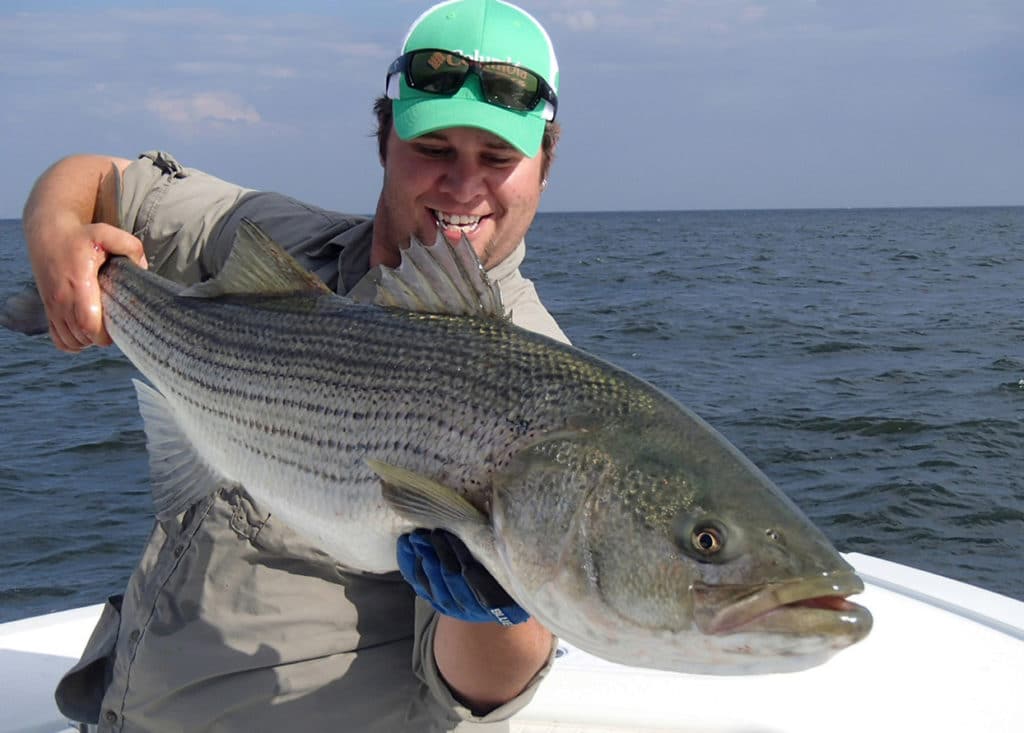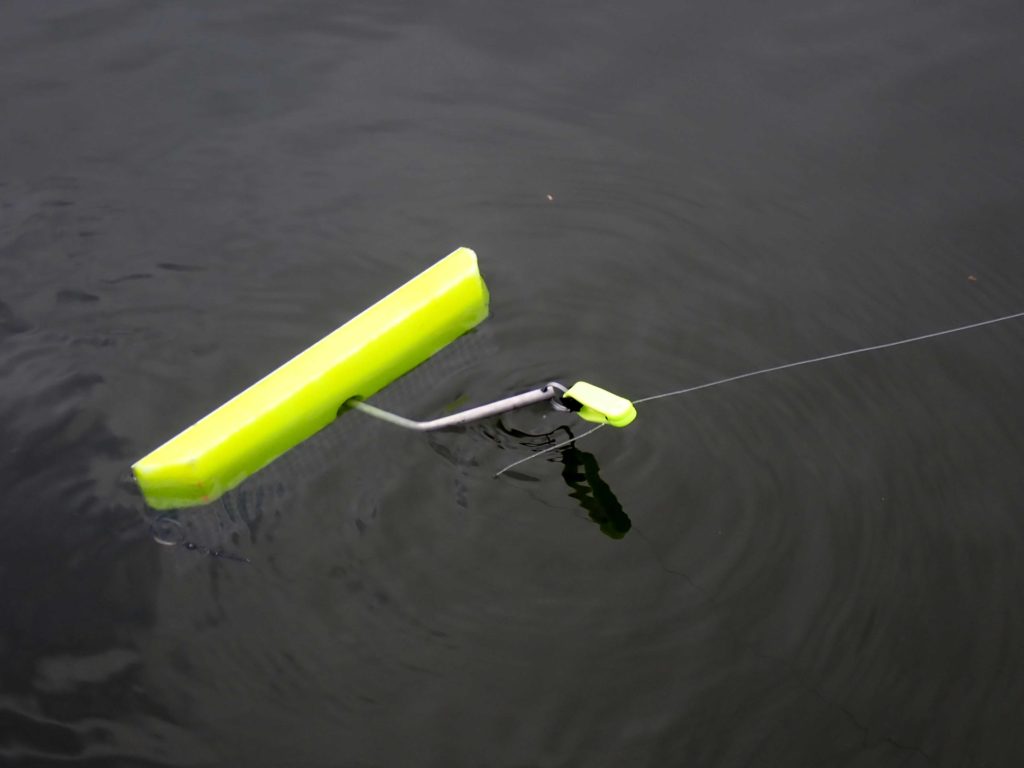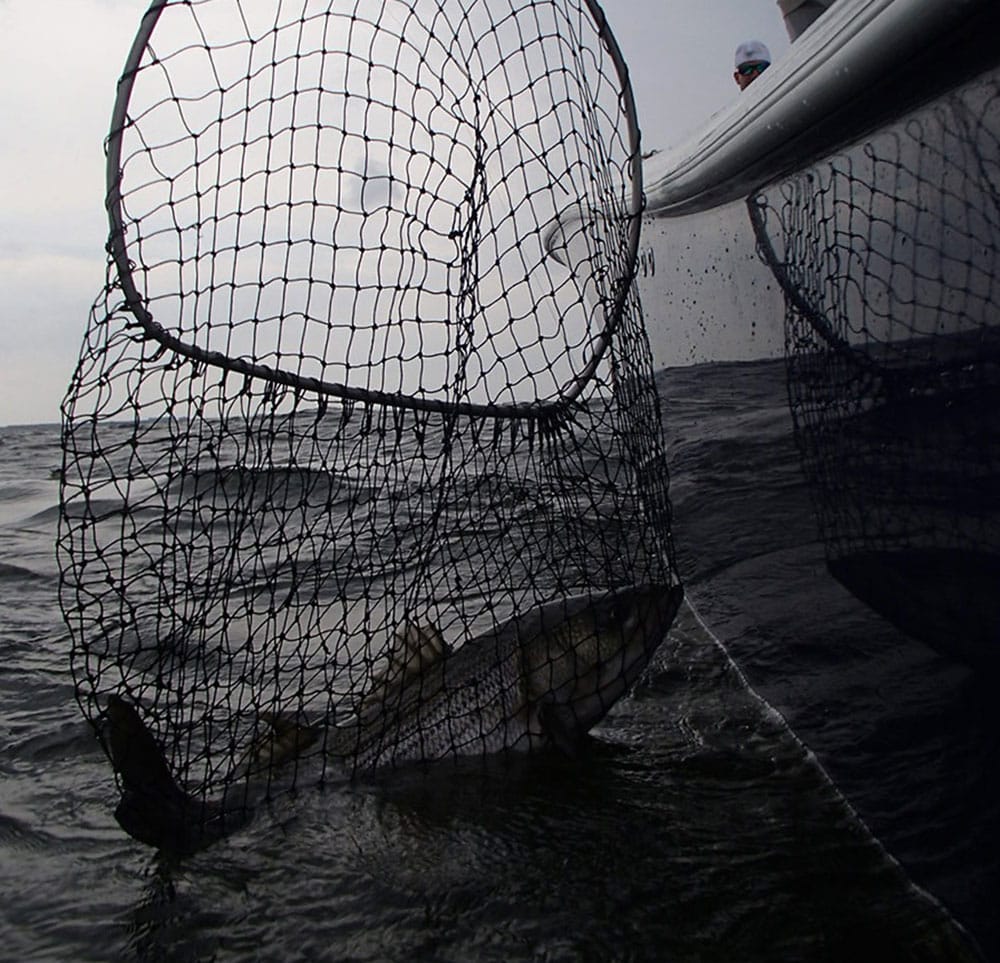
Striped bass anglers stick to tried-and-true patterns when it comes to trolling. Very rarely do you see a new method that’s both effective and revolutionary. But New Jersey angler Chuck “Tyman” Many has been trolling live eels with floating planer boards for nearly a decade now and has dialed in the wicked tactic to both find bass easier and convince them to hit.
“Striper anglers are used to fishing on the bottom around structure—trolling spoons, dragging Mojos and deep-diving plugs near the sea floor, and that works. But there’s a good majority of feeding bass that are active and will aggressively hit baits nearer the surface,” Many says. “A bass always has its eyes upward, and migratory fish are hanging in the low to middle water column, willing to come up for a meal. That’s the reasoning behind the floating planer board success.”
The planer-board technique started down in the Chesapeake Bay but has recently been implemented in Northeast waters as anglers grow more comfortable with the tactic. Late April through June and October through December rank as prime times to fish planers off New Jersey and New York, while December through February heats up off the Virginia Coast.
In Motion
Anglers used to put eels under big bobbers, fishing 5 to 30 feet below the surface, Many says. They assumed that bass would rise from the bottom to feed and suspend in the water column. “But we were always drifting with no direction to control where we went,” he says. “The floating planer board allows me to cover more water as we troll, thereby covering more fish schools. It gives me freedom to fish below the surface while moving around.”

Many’s rig consists of a Gamakatsu 8/0 inline circle hook, 3 to 4 foot of 30-pound fluorocarbon leader, and a 150-pound barrel swivel. He threads a bead onto the running line, which is always 30-pound hi-vis monofilament. Many chooses mono because braid trips the planer board and causes much unnecessary frustration. Hi-Vis line allows the captain to maintain and monitor the spread.
He then attaches the Trophy Stalker planer board. Holding the main leader by the barrel swivel, he takes the snap swivel that’s attached to the bottom of the planer board and clips it onto the main leader behind the barrel swivel. Once you let the leader and line out behind the boat to the desired distance, you clip the main running line into the plastic release clip that’s on the top of the planer.
V Spread
Many goes big, setting out 12 rods—five on each side with planer boards and two off the stern without planers. He weights nine with 1/4-, 1/2- and 1-ounce pinch-on rubber-core sinkers. Rods include 6 1/2-foot Shimano Northeast Terramar medium to heavy conventionals matched with Shimano Trinidad 20A or 30A reels.
He inserts the hook up through the eel’s bottom jaw and out the top jaw. Many wants the baits lively, so he does not smack them to stun them like most eelers tend to do.
Set out the farthest lines first, 100 yards behind the boat. The next lines should be 70 yards, then 50, 30 and finally 10 yards back. “Pull out the line on the planer metered like you do with tuna chunking, doling it out 10 to 30 feet back, then set the line in the planer,” he says. “The floating planer pulls to the side, so the farthest back baits are farther out to the side because of the resistance.”

Stack the rods accordingly in one big “V” shape spread. The farthest lines swing 75 to 100 yards to the side of the boat. When the fish hits, the planer trips, comes loose, slides down the line and catches the bead.
Read Next: Fishing for Striped Bass
Covering ground plays a key role in finding bass. This tactic really shines in a wind-against-tide scenario, allowing you to troll in the correct direction with the current. The live bait remains lively, instead of rolling around on itself.
“Trolling with planers is tough to do with a lot of boat traffic, and you need to get away from the crowds,” Many says. He trolls very slowly, averaging 1/2 to 1 1/2 knots, especially when the water is in the 50s. If the water has warmed to around 65 degrees, he might bump it up to between 1 and 2 knots.

Live Alternatives
While eels really produce and can be trolled all day, live bunker can be substituted. Switch out bunker every 20 minutes or so.
“With eels, the bass inhale it. I get more hookups than bunker, and by far, the biggest fish of 40 to 50 pounds always take the live eel.”
Many also prefers eels because bluefish shy away a little more from them than a live bunker.
“When you see monster bass come up to the surface and explode on the eels, blasting them out of the water, you’ll be hard-pressed to troll any other way again for stripers,” he says.








